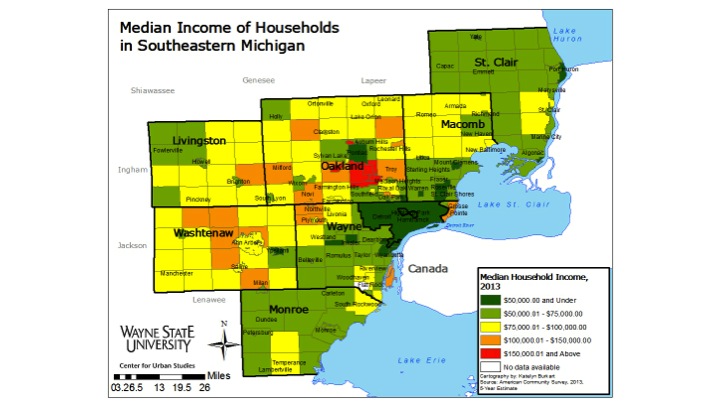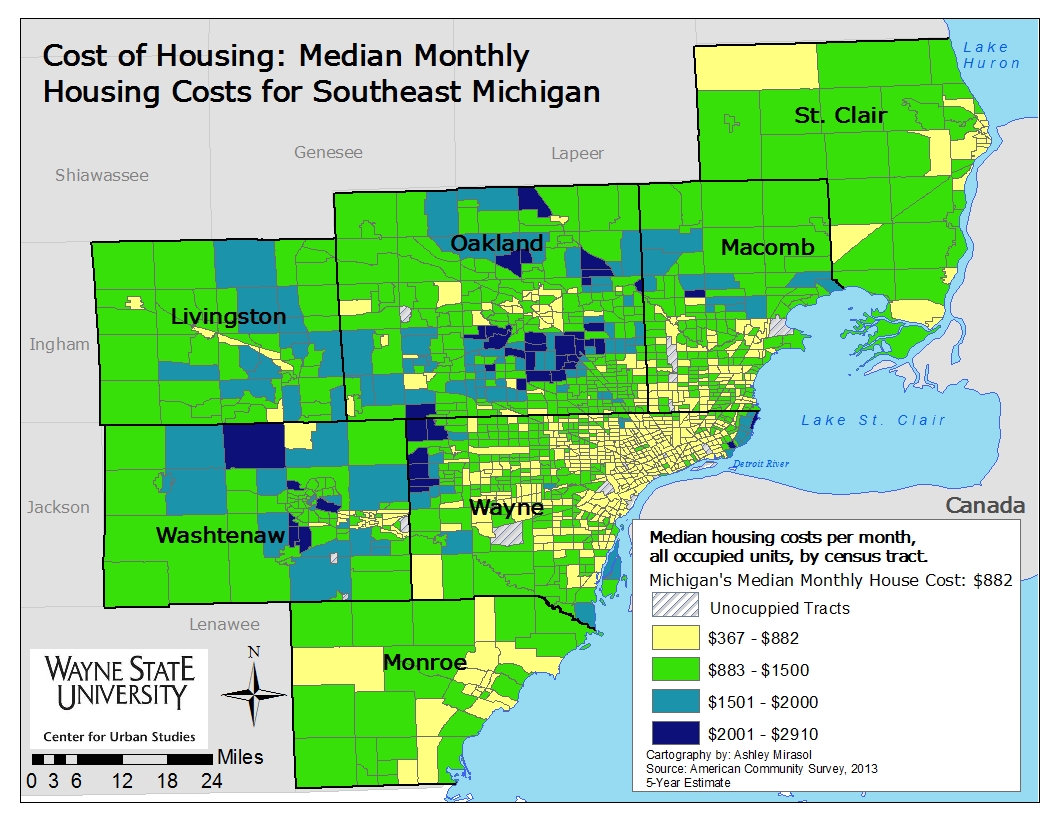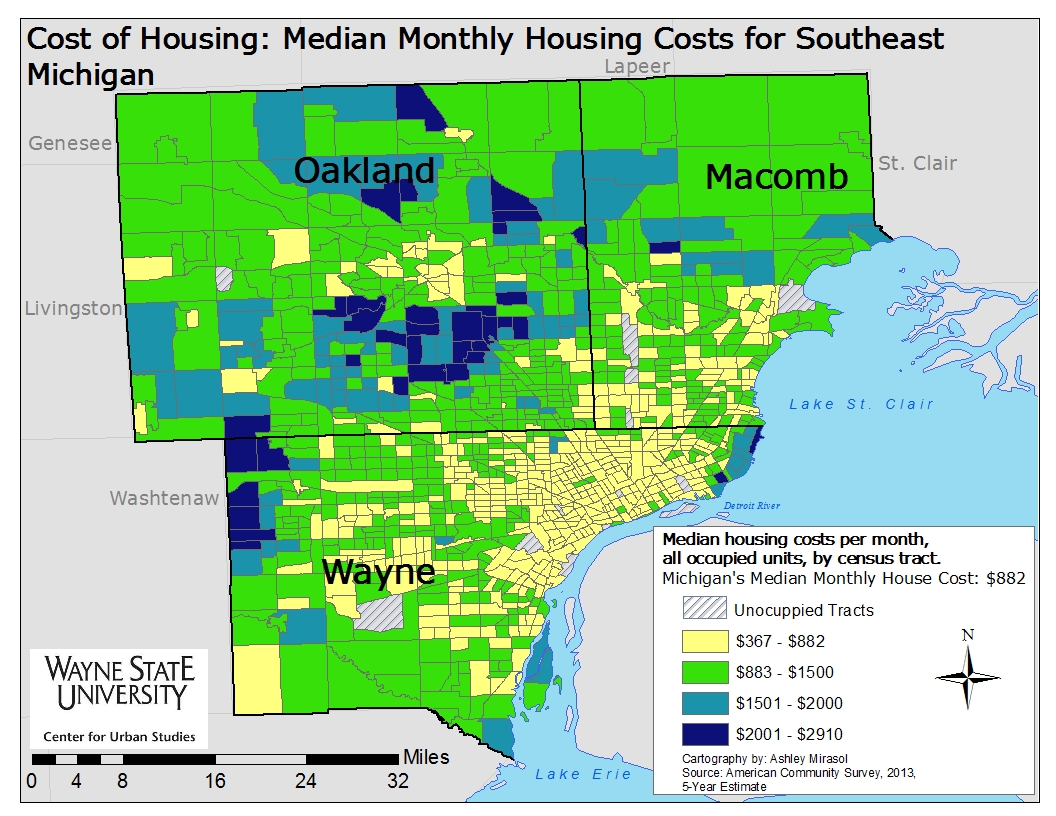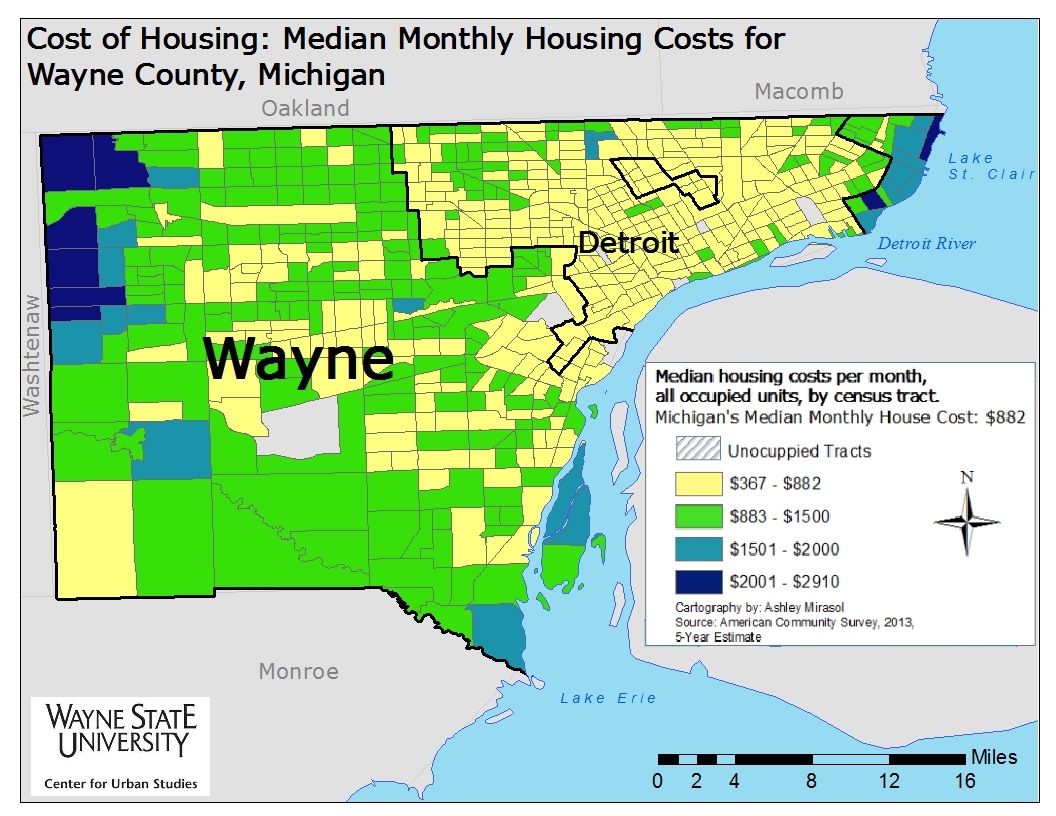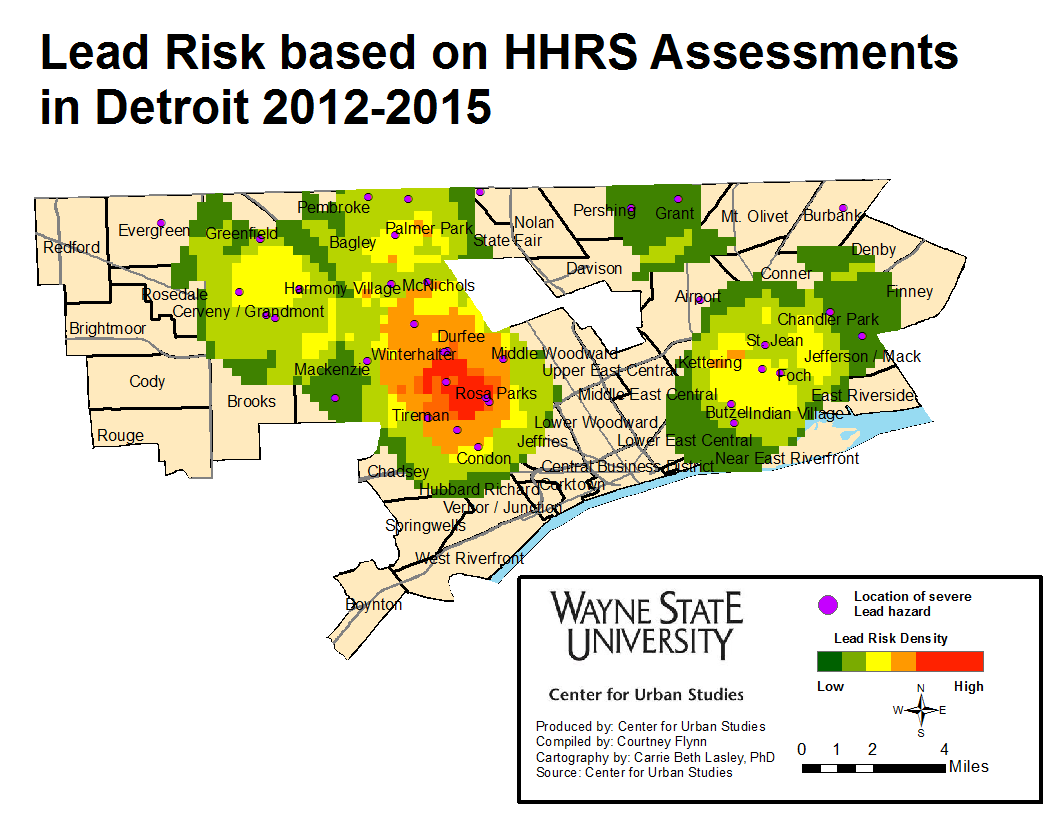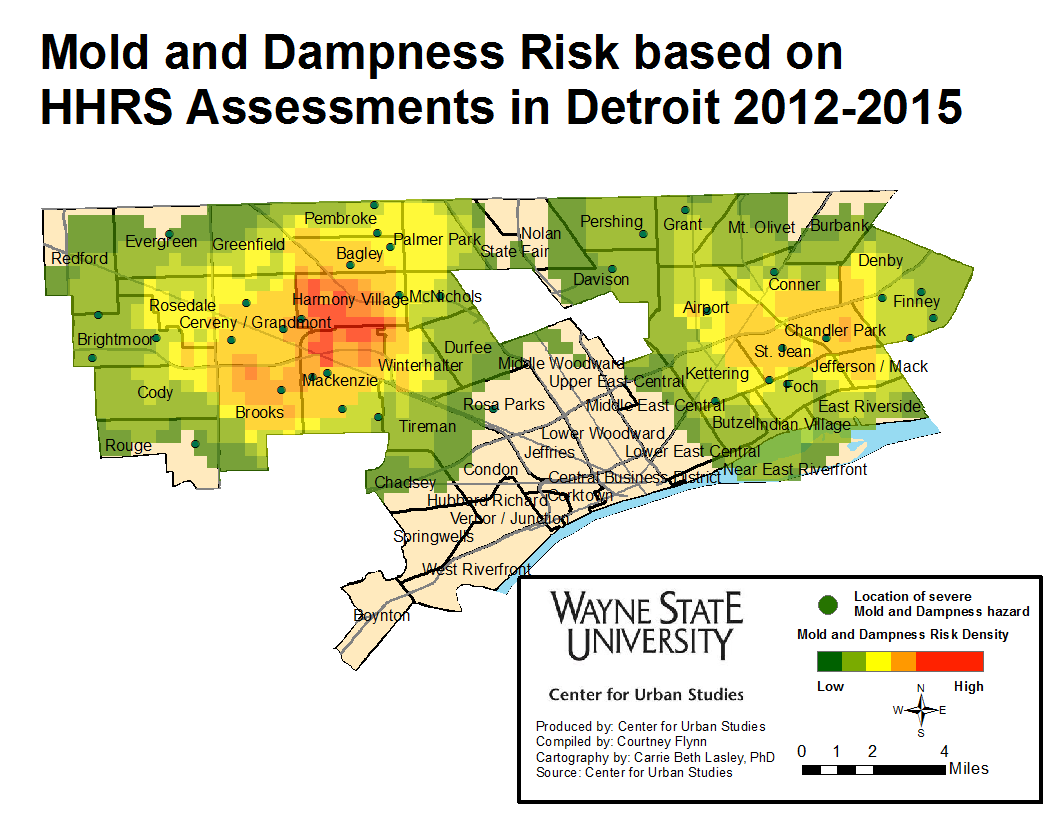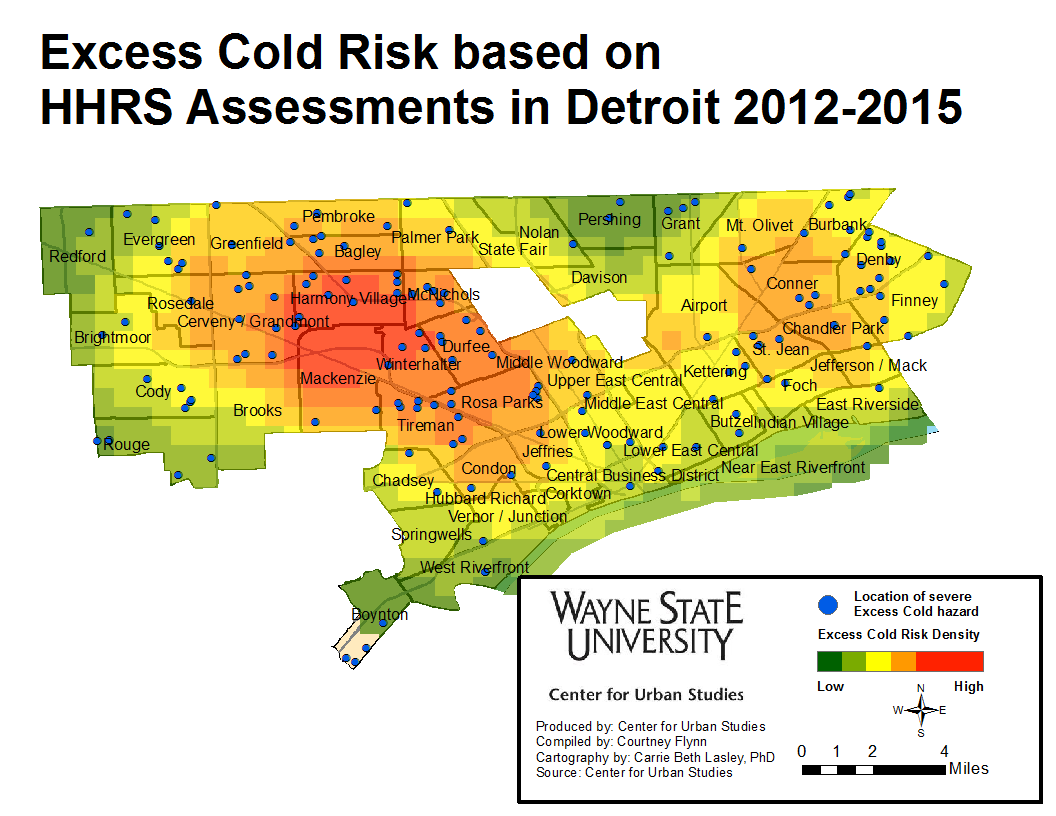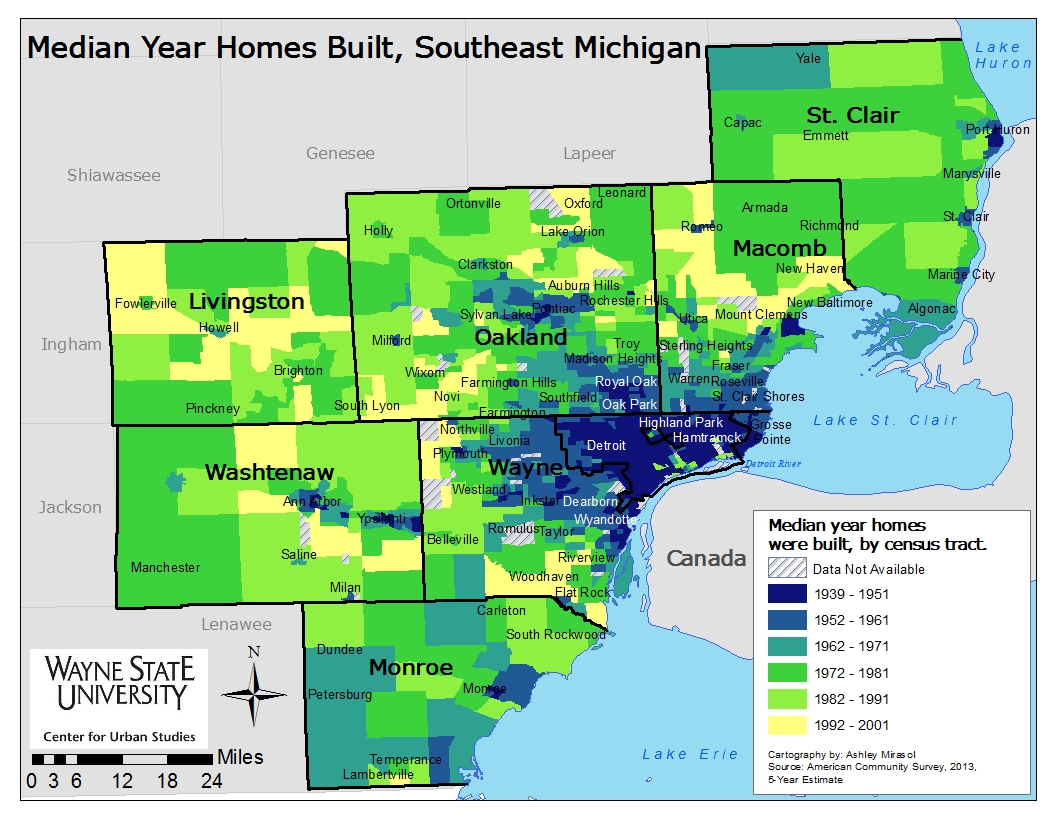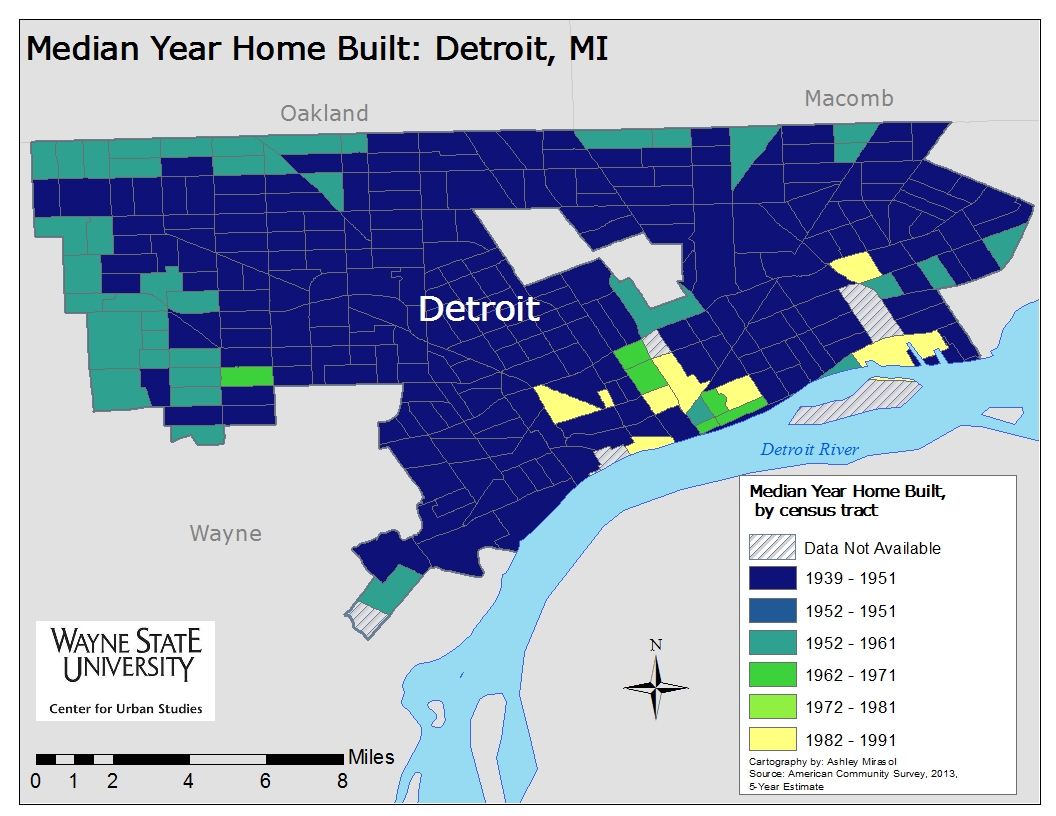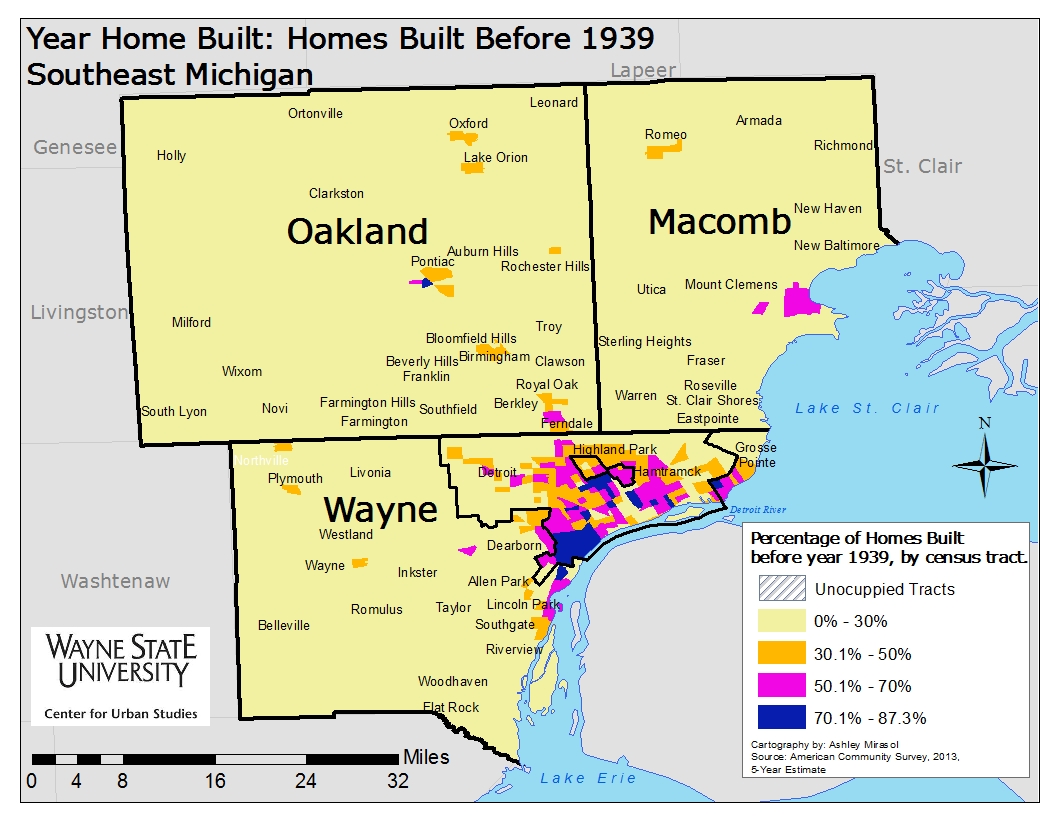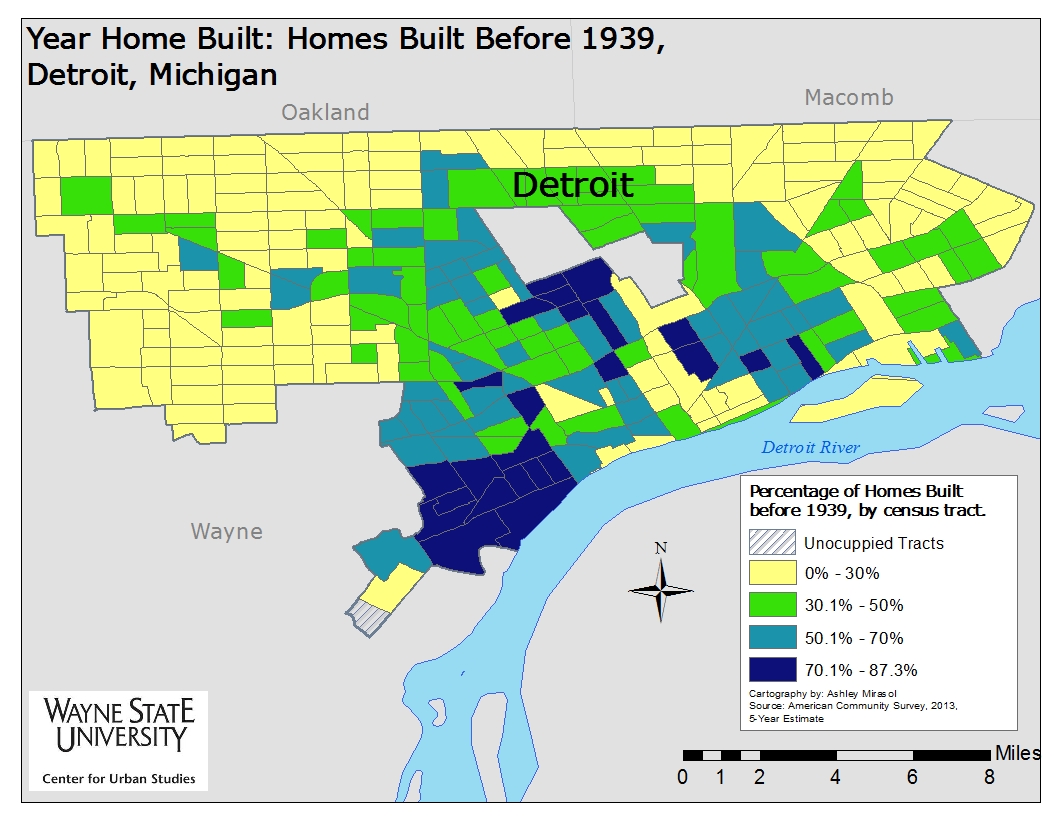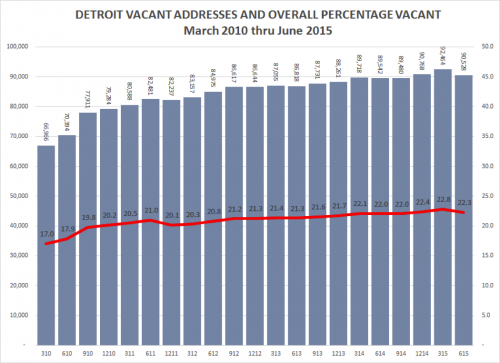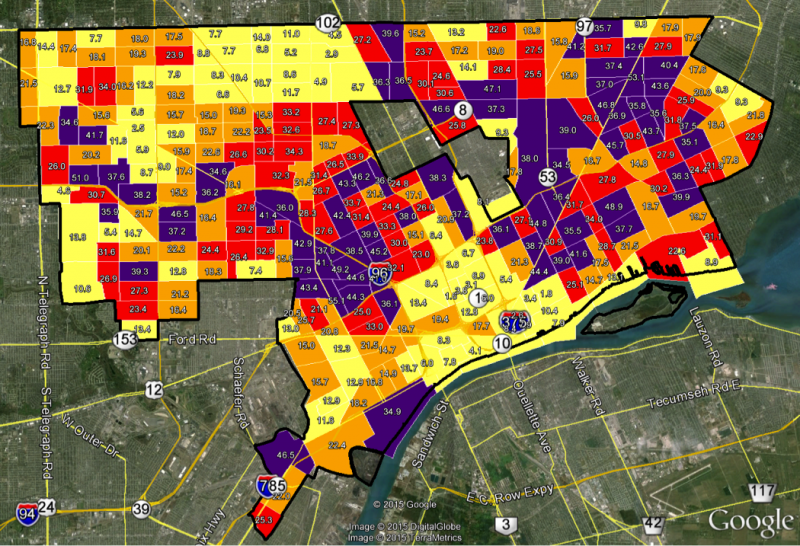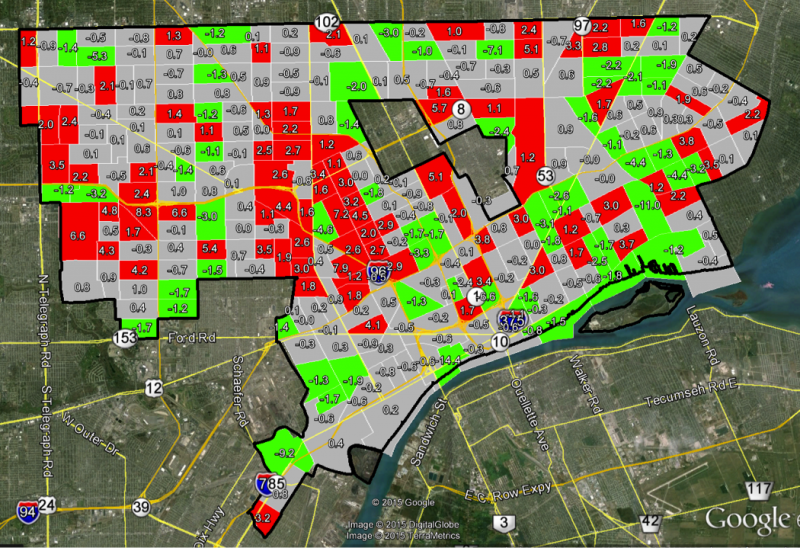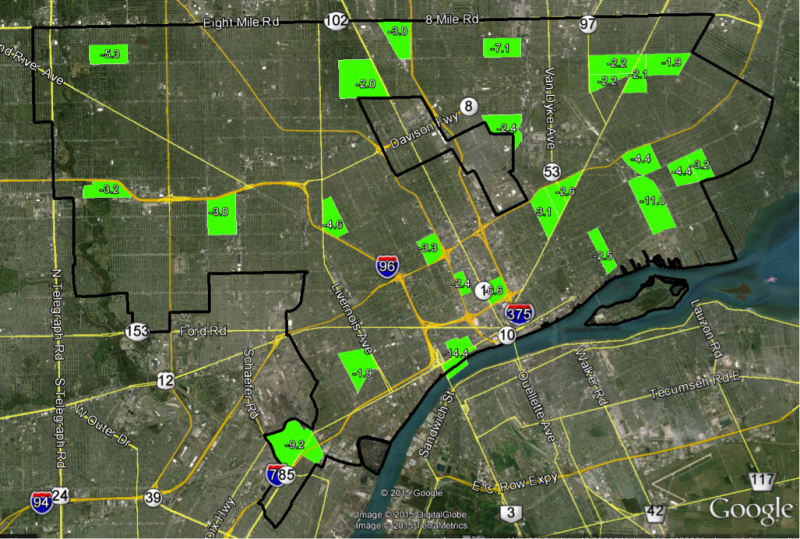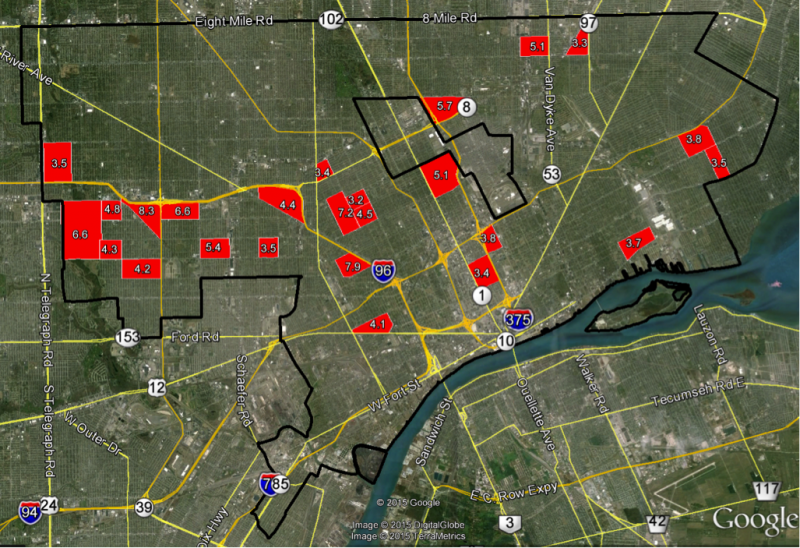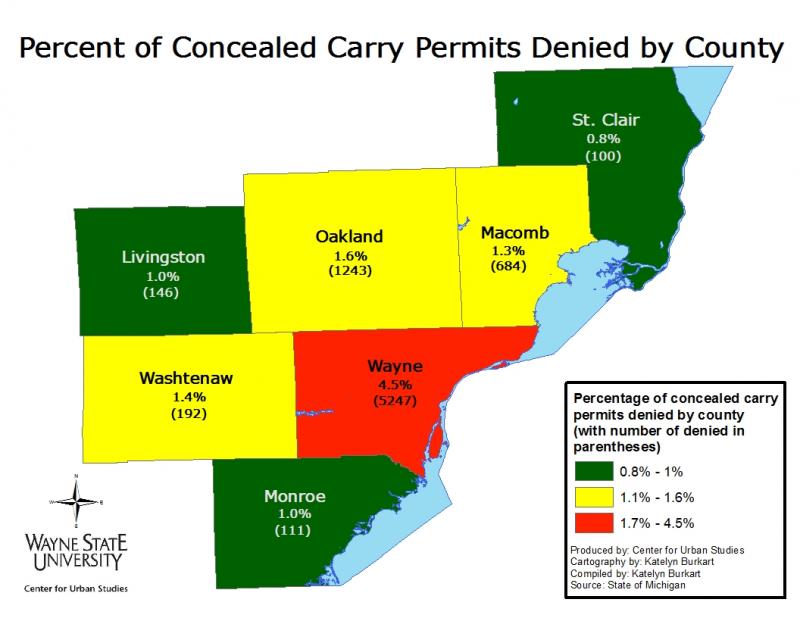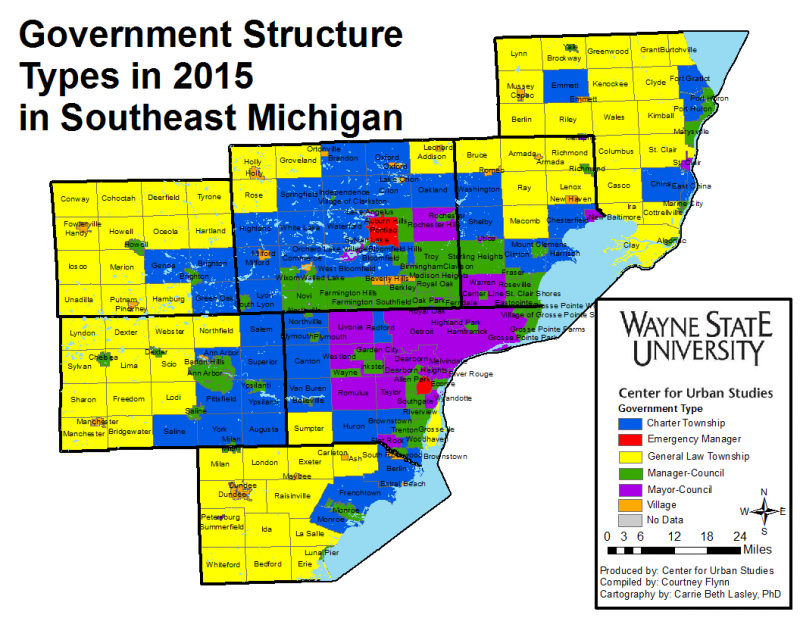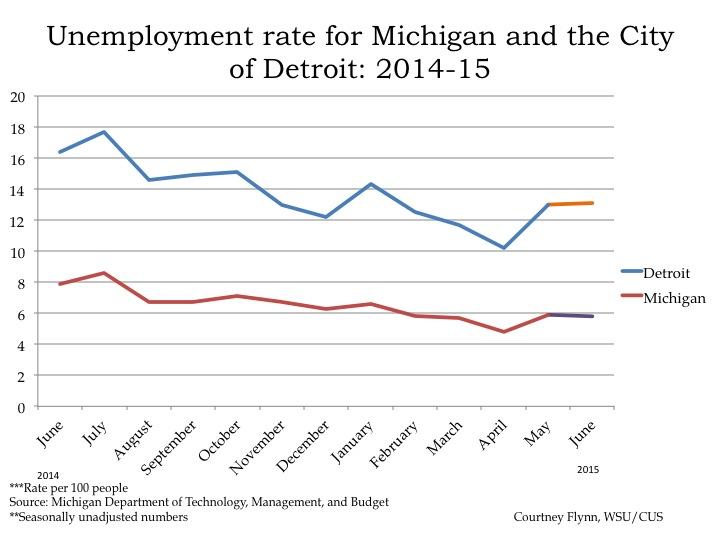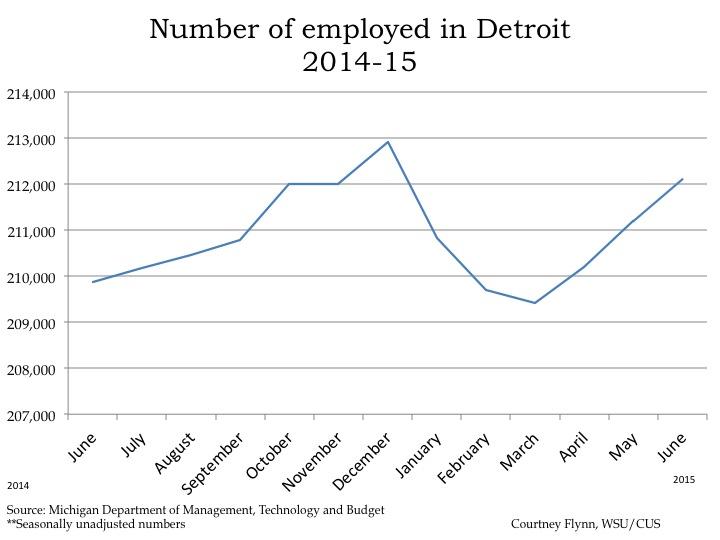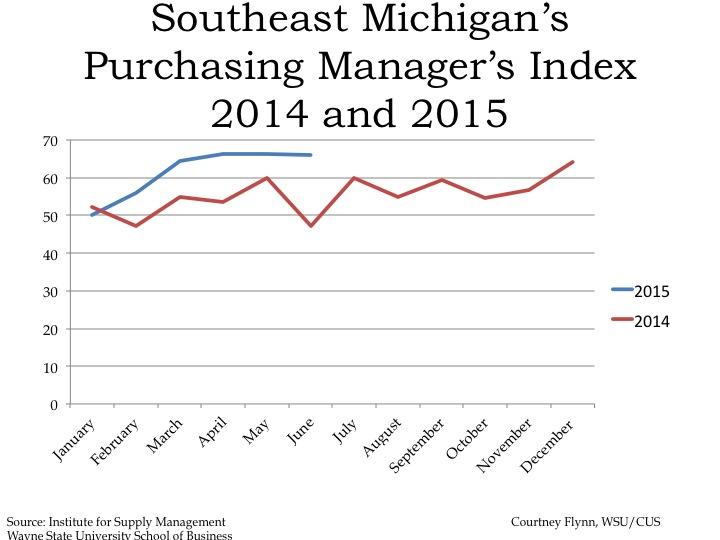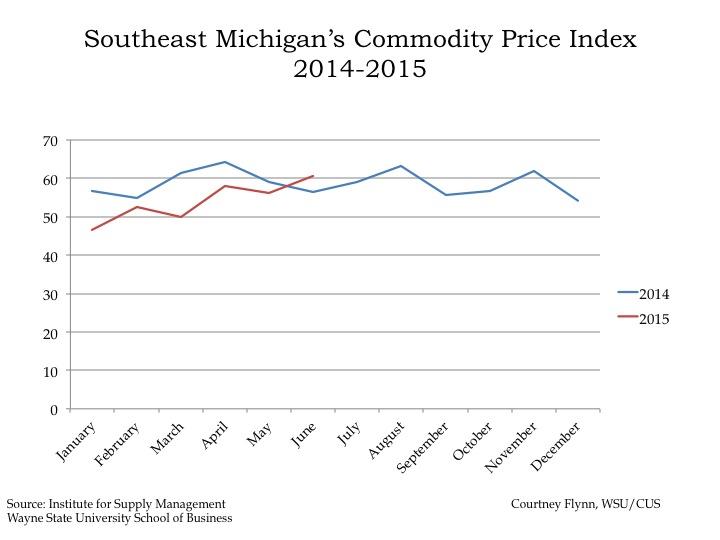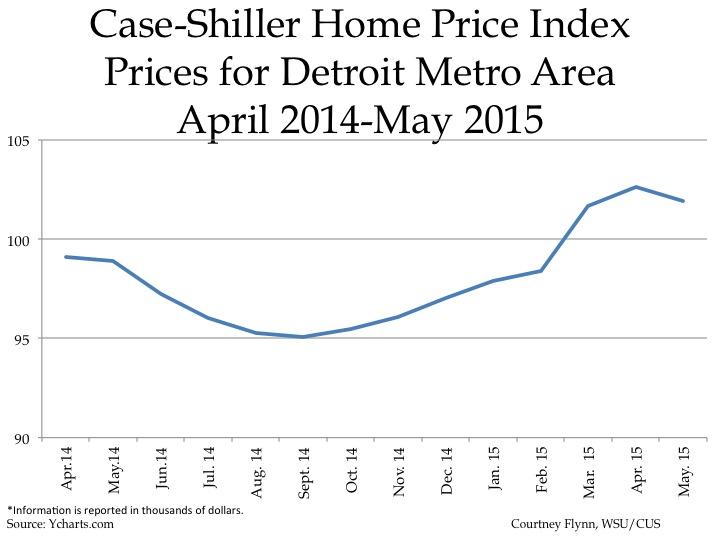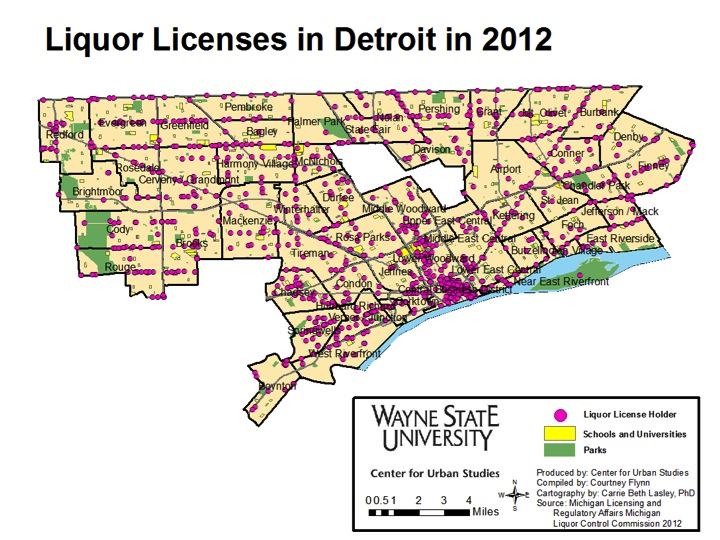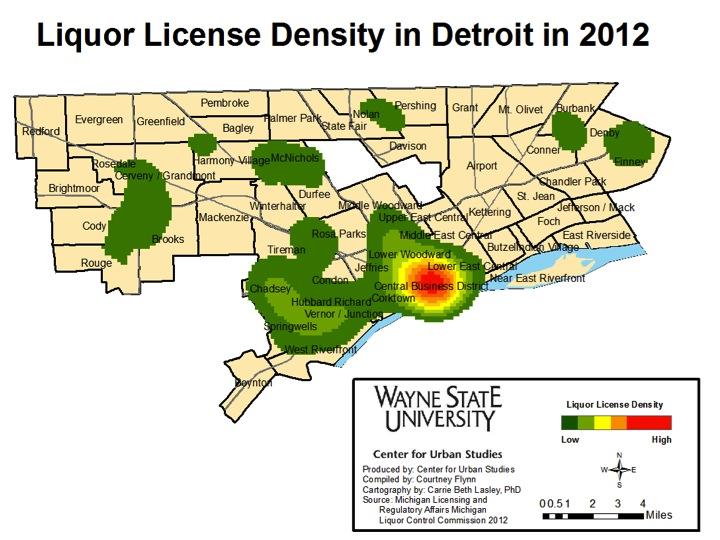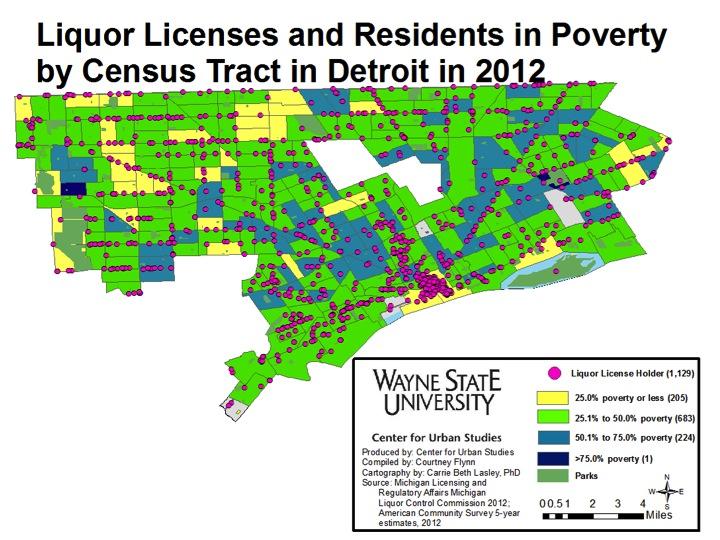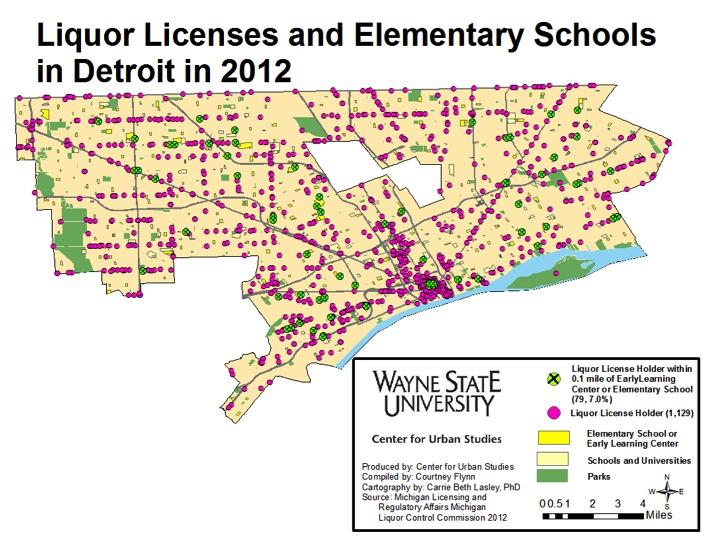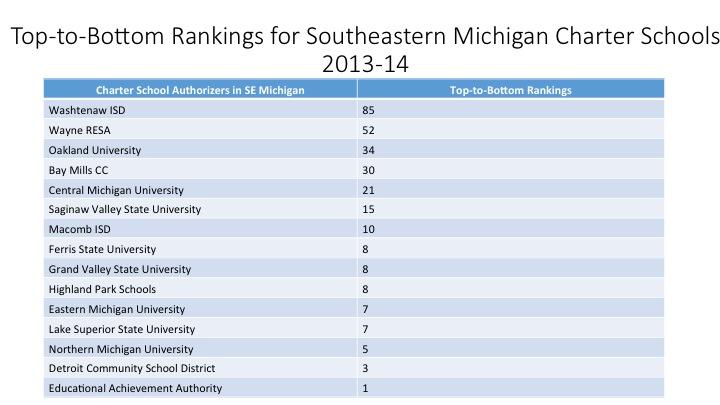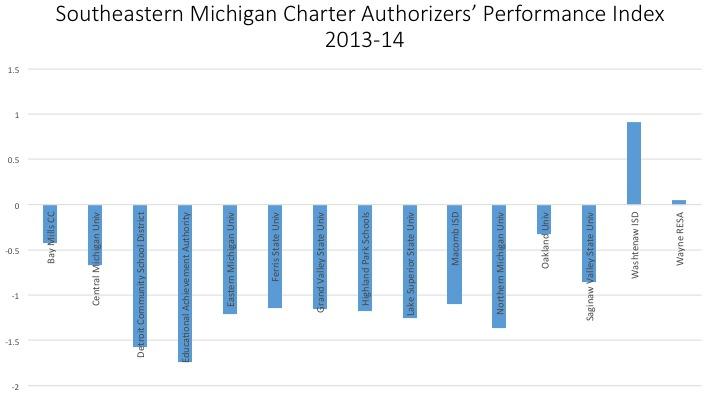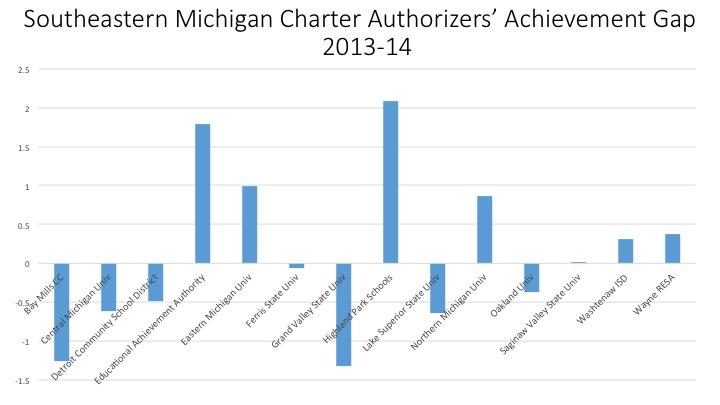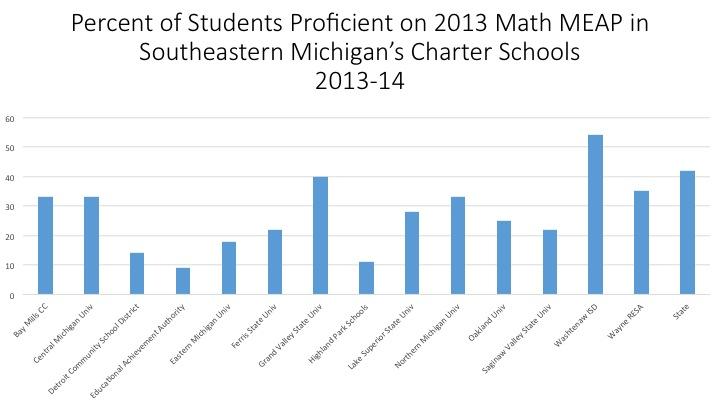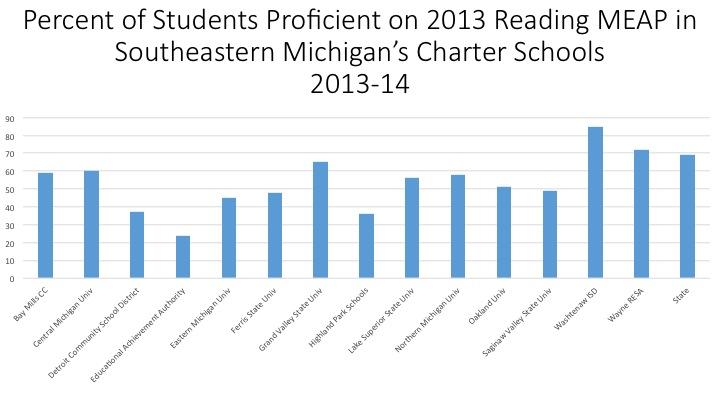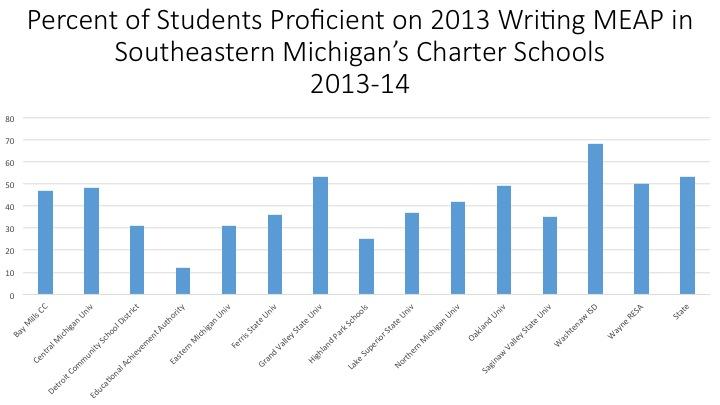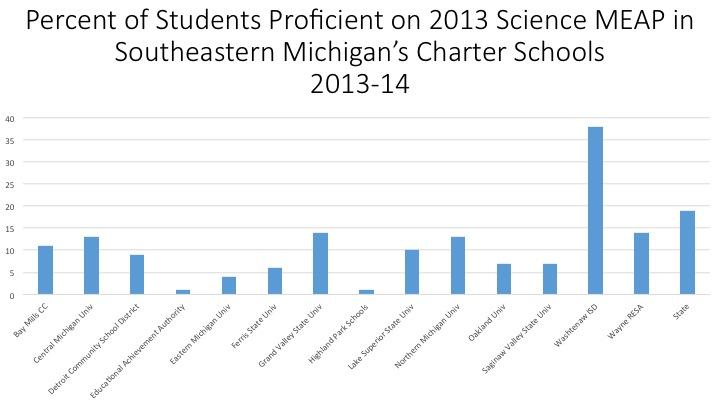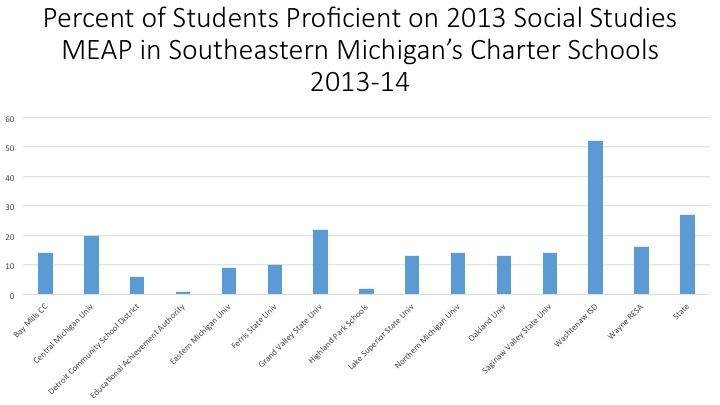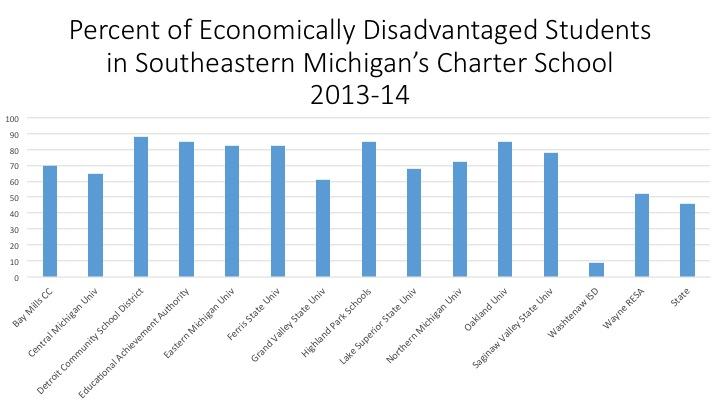In Southeastern Michigan, there were 11 communities with a median rental cost above $1,200 per unit, yet none of these municipalities had more than 46 percent of their tenants paying more than 35 percent of their income on gross rent. Regionally, the median household income ranges between about $75,000 and $100,000 at the municipal level. According to the U.S. Department of Housing and Urban Development, no more than a third of a household’s income should go toward rent. To highlight how a community’s median income compares to the percentage of rent of that income a household pays we have made three different maps:
- Households that spend 35 percent or more of income on rent
- Households that spend 50 percent or more of income on rent
- Households that spend 10 percent or less of income on rent
First though, two basic maps showing median gross rent at the municipal level and median income at the municipal level are below. Gross rent is defined by the U.S. Census Bureau as the “amount of the contract rent plus the estimated average monthly cost of utilities (electricity, gas, and water and sewer) and fuels (oil, coal, kerosene, wood, etc.) if these are paid for by the renter.”
Overall, Lodi Township in Washtenaw County had the highest median gross rent in Southeastern Michigan at $1,571. Two other Washtenaw County townships, Dexter and York, also had median rental costs above $1,200. At the county level, though, it was Livingston County with the highest median rental costs at $917. Howell and Genoa townships in Livingston County had median rental costs of $1,202. Only one community in Wayne County, Grosse Ile Township, had a median rental cost above $1,200 ($1,201). Wayne County had the lowest overall median rental cost at $777.
When looking at the median-income map we see the same communities, with the exception of those in Livingston County, with the highest median rental costs also have some of the highest median incomes. For example, the median income in Lodi Township is about $107,000 a month. A third of that would be about $36,000 a year spent in rent, or close to $3,000 a month. While Lodi Township did have the highest median rental cost in the region at $1,571, that is nearly half of what that one-third threshold would be. In the city of Detroit though, the median household income is $26,325 annually, or about $2,200 a month. With a median gross rent cost of $761, that is almost exactly a third of the average renters’ income. The difference between the highest median income and lowest median income in the region is 100 percent while the difference between the highest median gross rent and lowest median gross rent is 138 percent. This shows us that average rent prices are not in proportion to average incomes.
In Southeastern Michigan there are 22 communities, or about 10 percent of the region, in which 24 percent or fewer of renters pay less than 35 percent of their income to gross rent. We see that majority of the region’s renters set aside between 25 percent and 46 percent of their income for gross rent costs. There were only five communities in the region where 61 percent or more of the renters spent 35 percent or more of their income on rent. When increasing that threshold to 50 percent, there were only three (Groveland Township, Salem Township and Columbus Township) communities in the region where 45 percent or more of renters spent more than half of their income on rent. When an individual or a family spends for than 30 percent of their gross income on rent this is called rent burden and according to the National Center for Children in Poverty about 80 percent of low income households with children experience it.
Excluding Columbus Township because of the small sample size, the median income for both Groveland and Salem townships range between $75,000 and $100,000 while the median rent ranges between $650 and $1,000.
Only four communities in Southeastern Michigan had 14 percent of more of renters paying less than 10 percent of their income toward rent in 2013, according to the American Community Survey. Lyndon Township in Livingston County had the highest percentage at 23 percent and Northville, which is on the border of Wayne and Oakland counties, had 22.64 percent. The other two communities were located in Monroe Township.
According to the National Center for Children in Poverty urban areas typically experience higher rates of rental burden. However, in Southeastern Michigan we see that there were also several rural communities, such as Groveland Township, where tenants also experienced rental burden.

